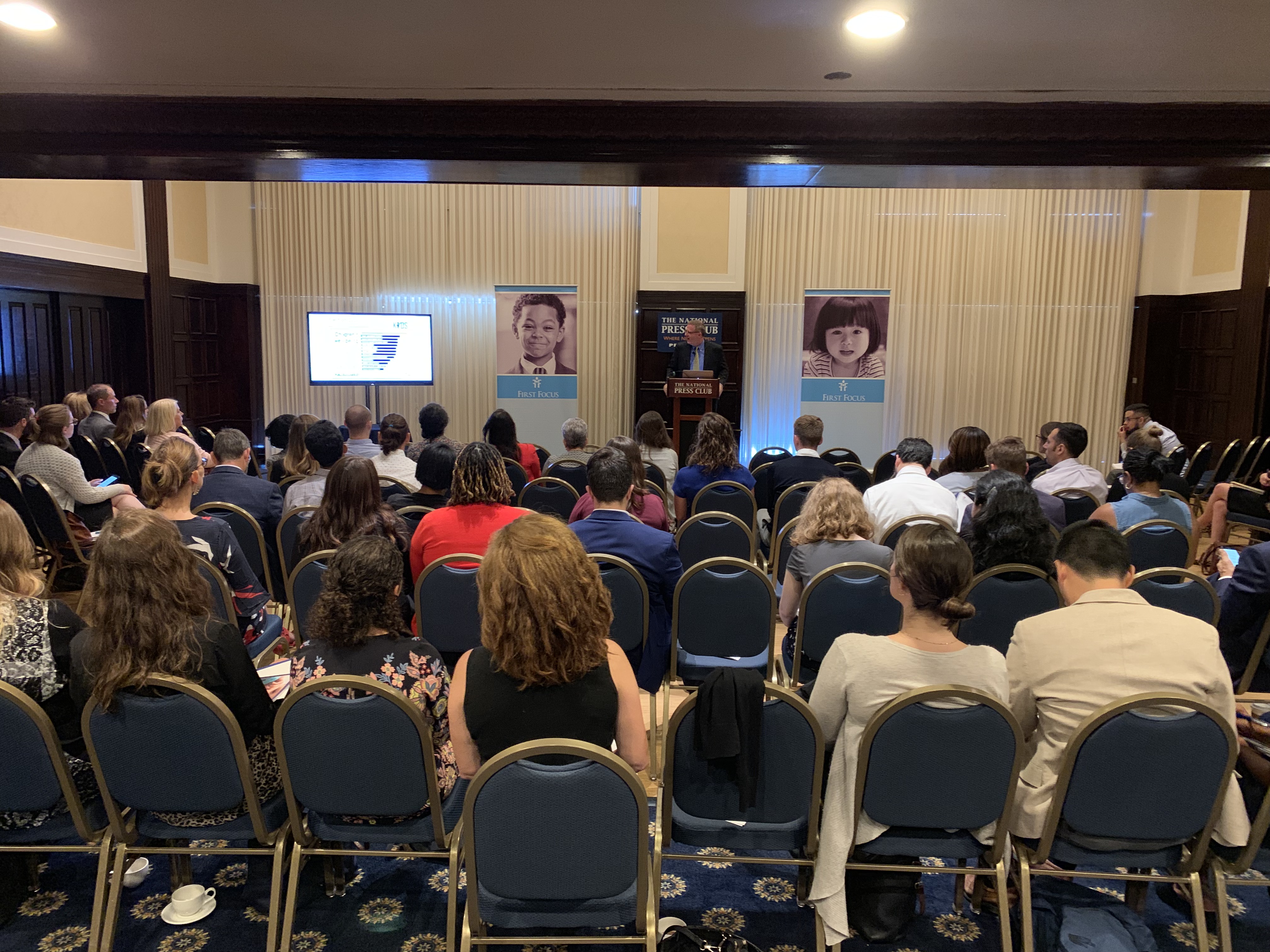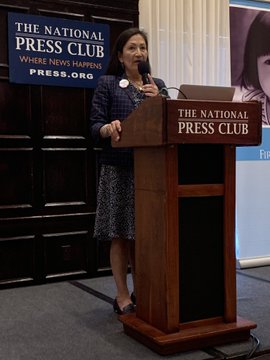
First Focus report: Child poverty remains high while federal spending on children declines
Editor’s note: CHN Intern Lear Burton is a junior and sociology major at Brigham Young University.
Earlier this month First Focus on Children held its annual Children’s Budget Summit and released its signature Children’s Budget publication that analyzes how well children have fared in federal spending over the past 5 years.
The poverty rate for children is 54.4 percent higher than it is for adults, so how well is the federal government doing in appropriating money to programs that benefit children? Unfortunately, we aren’t doing enough.

Bruce Lesley, president of First Focus, giving the opening remarks at the Children’s Budget Summit 2019
The share of federal spending on children has dropped to an all-time low of 7.21 percent of the federal budget, a near 10 percent decline since 2015. Furthermore, President Trump’s proposed budget for FY 2020, if passed, would cut another $20 billion from children’s programs, dropping the share on children’s spending to just 6.45 percent.
Bruce Lesley, President of First Focus and a CHN board member, opened the event by highlighting some of the challenges our nation’s children are facing, including children seeking asylum and being held in cages and children being threatened with a loss of SNAP benefits. The bottom line? Lesley agrees that Trump’s War on Children is a reality.

Rep. Debra Haaland (D-NM) spoke in support of increasing funding on federal programs that benefit children. “It is not okay to have children in our country go hungry, that is absolutely not okay,” she said. (Photo Credit Dr. Manuel Pastor @Prof_MPastor)
Federal spending on children is not keeping pace with inflation, and without appropriate funding for children’s programs we will struggle to adequately address issues that affect children. In fact, beginning with the last fiscal year, we now annually spend a larger share of the federal budget on interest on the national debt than on children’s programs.
In the introduction to Children’s Budget 2019 Lesley stated, “The future prosperity of any society depends on its ability to boost the health and well-being of the next generation. When we devote resources to improve programs and services that help all children be healthy, get a good education, and contribute to our collective success, we all benefit and help ensure that we are a thriving country in the decades to come.”
Dr. Manuel Pastor, Professor of Sociology and American Studies & Ethnicity at the University of Southern California, demonstrated how an understanding of changing demographics is critical to approaching children’s issues.
In recent years, the United States has seen a large increase in the proportion of Latinx children, and a large decrease in the proportion of Non-Hispanic White children. This results in the median age of Non-Hispanic Whites rising (43) while the median age for Latinx people stays much lower (28). Deemed the Racial Generation Gap, this issue helps explain the racial disconnect between generations; the older and whiter generation does not see itself in the younger and more diverse generation.

Dr. Manuel Pastor presenting on how changing demographics affect how we approach children’s issues at the Children’s Budget Summit 2019
“While there is already racial inequality in median household income, there is much more racial inequality when we look at families with children under 5,” Dr. Pastor said.
These numbers mean that fighting for appropriate funding for children’s programs isn’t just about children, it is a matter of racial equity.
Children are a unique minority because, in most cases, they lack the ability to advocate for themselves. Lesley puts it this way: “Unlike other populations, children do not vote. Children do not contribute to political campaigns. Children do not operate political action committees (PACs). And children do not run powerful advocacy groups that can demand political change on their behalf. Therefore, children lack political power.”
Overall, Children’s Budget 2019 painted a grim picture; with federal spending on children at an all-time low, we need to invest in children. Our children are our future and they need our voices now more than ever.

